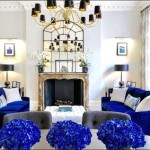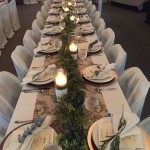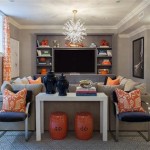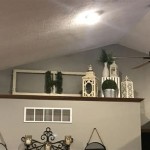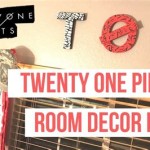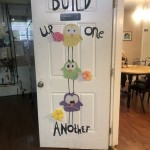How To Decorate a Large Wall Space
Large, expansive wall spaces present both a challenge and an opportunity for interior design. Successfully decorating these areas can transform a room, adding visual interest, balance, and personality. Conversely, poorly executed design choices can leave the space feeling barren, unbalanced, and even overwhelming. This guide offers a comprehensive overview of strategies for effectively decorating expansive wall spaces, considering both the functional and aesthetic elements of design.
1. Assess the Space and Functionality
The first step in decorating a large wall is a careful assessment of the space. Determine the dimensions of the wall, including its height, width, and any architectural features such as windows, doors, or built-in shelving. Observe the natural light conditions, considering the direction the wall faces and how sunlight affects the space throughout the day. Determine the room's primary function and how the wall space contributes to it. For instance, a living room wall may need to accommodate a television, while a dining room wall might serve as a backdrop for a buffet or artwork.
Also, evaluate the existing aesthetic and decor of the surrounding area. The chosen wall decor should seamlessly integrate with the existing design elements, creating a cohesive and harmonious look. Consider the color palette, style, and materials used in the room, and incorporate those elements into the wall design. The style should also be compatible with the function of the room. A playroom may require a different design approach than a home office.
2. Determine the Focal Point
Identifying a focal point is crucial for anchoring the design of a large wall. The focal point is the element that draws the eye and serves as the visual center of attention. This could be a large piece of artwork, a gallery wall, a statement mirror, or a unique architectural element such as a fireplace or built-in bookshelves. Selecting the focal point early in the design process allows for the rest of the decor to complement and enhance it.
Consider the placement of furniture in relation to the focal point. The furniture arrangement should guide the eye towards the focal point, creating a balanced and visually appealing composition. The scale of the focal point relative to the wall's dimensions is also critical. The focal point should be appropriately sized, avoiding a disproportionately small element that gets lost or a design that overwhelms the space.
3. Select the Appropriate Decor Elements
Once the focal point is established, consider the range of decor options available. There are many options for decorating a large wall. Artwork, whether it be paintings, prints, photographs, or sculptures, is a classic choice. Consider the size, style, and subject matter of the artwork in relation to the room's decor and the focal point. Mirrors can be used to reflect light and create the illusion of a larger space. Consider the shape, size, and frame of the mirror to complement the overall design.
Gallery walls offer a curated collection of artwork, photographs, or other decorative items, arranged in a cohesive composition. Consider creating a theme for the gallery wall, such as a color palette, a specific art style, or a collection of family photographs. Shelving can be a functional and decorative element. Floating shelves, built-in bookshelves, or open shelving units can provide storage and display space for books, decorative objects, and plants. Textiles can be used to add texture, color, and visual interest. Tapestries, wall hangings, or fabric panels can soften a large wall and create a cozy atmosphere. Plants can add natural elements and vibrancy. Consider using hanging plants, wall-mounted planters, or large potted plants to bring life and color to the space.
4. Consider Scale and Proportion
Maintaining proper scale and proportion is essential when decorating a large wall. Do not use small pieces of art on a large wall, as they will appear lost and insignificant. Conversely, avoid using overly large pieces of art or furniture that overwhelm the space. Measure the height and width of the wall and consider the size of the chosen decor elements in relation to these dimensions. Create a visual balance by distributing the decor elements across the wall space. Avoid concentrating all the decor in one area, which can create an unbalanced look.
Consider the negative space, or the empty areas surrounding the decor elements. Negative space can be used strategically to create a restful and visually appealing composition. Do not overcrowd a wall with decor; allow for some negative space to create a sense of balance and breathing room. Grouping decor elements, such as creating a gallery wall or arranging multiple pieces of art in a cluster, can create a more unified and visually impactful display than placing individual pieces randomly. Consider the height and arrangement of the groupings in order to create a balanced and visually appealing composition.
5. Implement Color and Texture
Color and texture play an important role in creating a visually dynamic and appealing wall design. Choose a color palette that complements the existing decor in the room. Consider using the wall as an opportunity to introduce a pop of color or a contrasting hue. Be sure to maintain harmony to the overall aesthetic.
Incorporate a variety of textures to add visual interest and depth. Mix smooth and rough surfaces, such as canvas art with framed photographs or a mirror with a wood frame. Consider using textured materials such as woven wall hangings, textured wallpaper, or paneling to add dimension and visual interest. Texture can be used to create a sense of warmth, depth, and visual intrigue, preventing the wall from appearing flat or monotonous.
6. Optimize Lighting
Lighting is an integral part of decorating a large wall, as it can highlight the decor elements and enhance the overall ambiance of the room. Consider incorporating a combination of ambient, task, and accent lighting. Ambient lighting provides general illumination for the room. Task lighting is used for specific activities, such as reading or working. Accent lighting highlights specific features, such as artwork or architectural details. Consider using wall sconces, picture lights, or spotlights to draw attention to the focal point or other decorative elements on the wall.
Adjust the intensity and direction of the lighting to create the desired mood and atmosphere. Experiment with different lighting schemes to determine the best way to showcase the decor elements and enhance the overall design. Indirect lighting, such as uplighting or backlighting, can create a soft and inviting glow. Think about the effect you want to achieve, and plan your lighting design accordingly. Consider how natural light interacts with the decor elements, and use artificial lighting to supplement or enhance it.

10 Essential Ideas For Decorating Large Walls The Unlikely Hostess

How To Decorate A Big Blank Wall Sanctuary Home Decor

How To Decorate A Big Blank Wall Sanctuary Home Decor

How To Decorate A Large Wall Family Room Walls Decor Living

10 Essential Ideas For Decorating Large Walls The Unlikely Hostess Wall Decor Living Room Family

How To Decorate A Big Blank Wall Sanctuary Home Decor

10 Essential Ideas For Decorating Large Walls The Unlikely Hostess

Tall Ceilings Large Wall Space How To Decorate Home Living Room

14 Creative Ways To Decorate An Empty Big Wall Living Letter Home

How To Decorate A Large Wall Designed Decor
